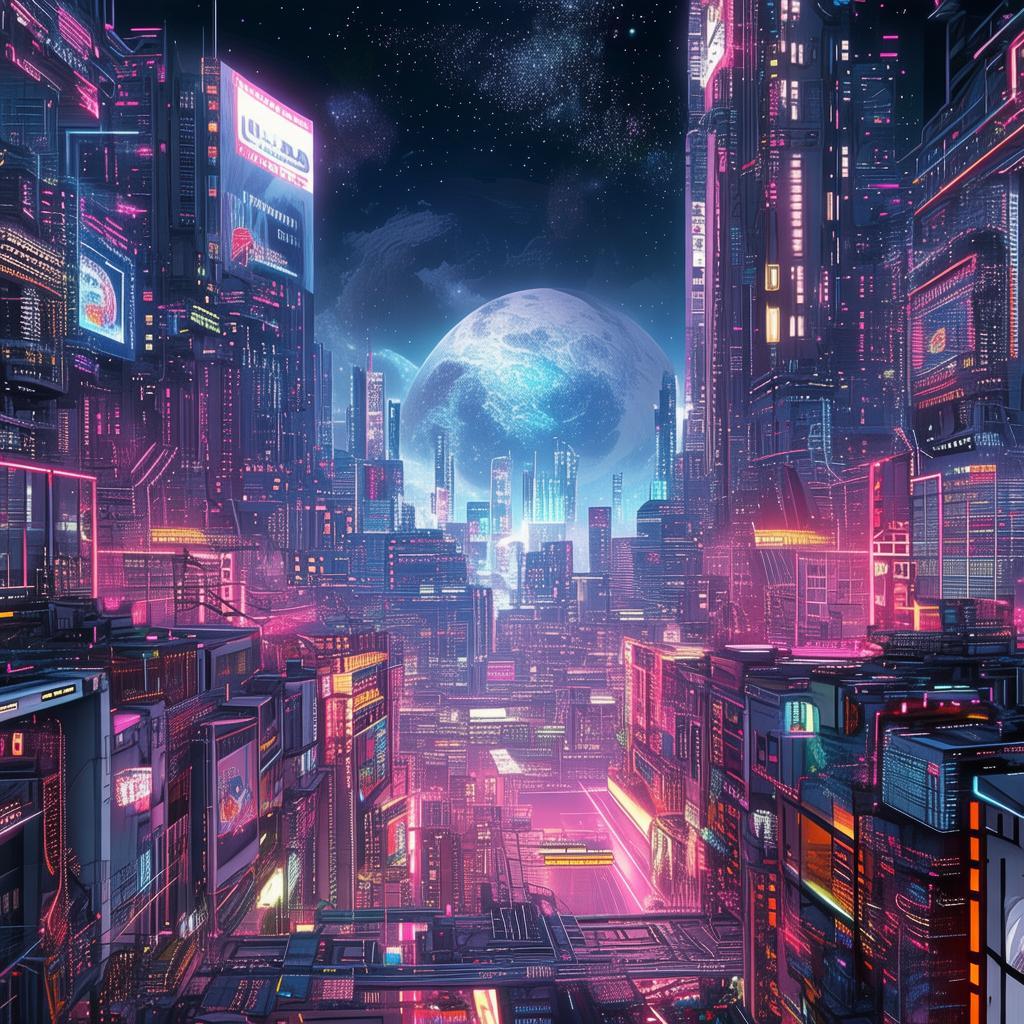The Chromatic Rebellion: A Watercolor Futuristic Political Intrigue
In the heart of the Chromatic Empire, where the colors of the people dictated their status and power, there was a city that stood as a beacon of hope and defiance. Known as the Watercolor District, it was a place where the colors of the people were as vibrant and diverse as the watercolors that adorned the walls of its homes.
Amara, a young artist with a gift for blending the most unexpected colors, lived in this district. Her paintings were not just works of art; they were whispers of rebellion, hidden meanings that spoke of a world beyond the color-coded hierarchy. Amara's dreams were simple: to paint a world where every color was equal, where the watercolors of her heart could be seen by all.
One day, as Amara was painting a mural depicting a utopian society, she was approached by a mysterious figure known only as the Chromatic Whisperer. "Your art has eyes," the Whisperer said, a voice that seemed to resonate with the colors of the mural. "You have the power to see beyond the surface of this world."
The Whisperer revealed that the Chromatic Empire was built on a lie. The colors were not a natural occurrence but a result of a long-forgotten experiment that had gone awry. The elite, those with the most vibrant colors, were the ones who had control, while the rest were slaves to their skin's hues.
Amara was given a choice: remain silent and continue her life as an artist, or join the Chromatic Rebellion and fight for a world where color was irrelevant. The Whisperer handed her a small, intricately designed watercolor palette, its colors glowing with an otherworldly light.
As the rebellion began to stir, Amara found herself at the center of it all. Her paintings became the rallying cry, their hidden messages inspiring others to rise up against the oppressive regime. But the Empire was not without its enforcers, and the rebellion faced a formidable foe.
One night, as Amara was sketching a map of the district, she was confronted by a guard. "You're not just an artist, are you?" he sneered, his eyes reflecting the red of his uniform. "You're a traitor."
Before the guard could react, Amara's palette glowed, and a surge of colors enveloped the room. The guard, caught off guard, stumbled backward, his eyes widening in shock as the colors of his uniform began to fade.
Word of Amara's power spread quickly, and she became the symbol of the rebellion. But the Empire's response was swift and brutal. They sent their most skilled enforcers to hunt her down, determined to crush the rebellion before it could take root.
Amara, with the help of her newfound allies, the Chromatic Whisperer and a group of rebels, set out to find the source of the experiment that had created the color-coded society. They traveled through the Empire, uncovering secrets and lies at every turn.

In a hidden underground laboratory, they discovered the truth: the experiment had been a failed attempt to create a perfect society, where each person's color represented their worth. But the experiment had gone too far, and the colors had become a tool for oppression.
As they delved deeper into the lab, they found a way to reverse the experiment. It required a sacrifice, one that Amara was willing to make. With the Chromatic Whisperer's guidance, she painted a mural of unity, blending all the colors of the world into one.
The mural glowed with an intense light, and as it did, the colors of the Chromatic Empire began to fade. The people, once bound by their colors, were now free to be who they truly were.
The Empire crumbled, and the Chromatic Rebellion was victorious. Amara, the artist who had once painted dreams on the walls, had become the architect of a new world. Her watercolors had not just painted a picture; they had painted a future.
In the aftermath, Amara stood on the ruins of the old Empire, her heart filled with hope. She looked around at the people, their faces no longer defined by the colors of their skin, and she knew that her dream had become a reality.
The Chromatic Rebellion had not only changed the world but had also changed Amara. She had learned that true power came not from the colors one wore but from the colors one painted with their heart. And as she looked out over the new world, she knew that her watercolors would continue to inspire, to dream, and to bring color to the world for generations to come.
✨ Original Statement ✨
All articles published on this website (including but not limited to text, images, videos, and other content) are original or authorized for reposting and are protected by relevant laws. Without the explicit written permission of this website, no individual or organization may copy, modify, repost, or use the content for commercial purposes.
If you need to quote or cooperate, please contact this site for authorization. We reserve the right to pursue legal responsibility for any unauthorized use.
Hereby declared.









